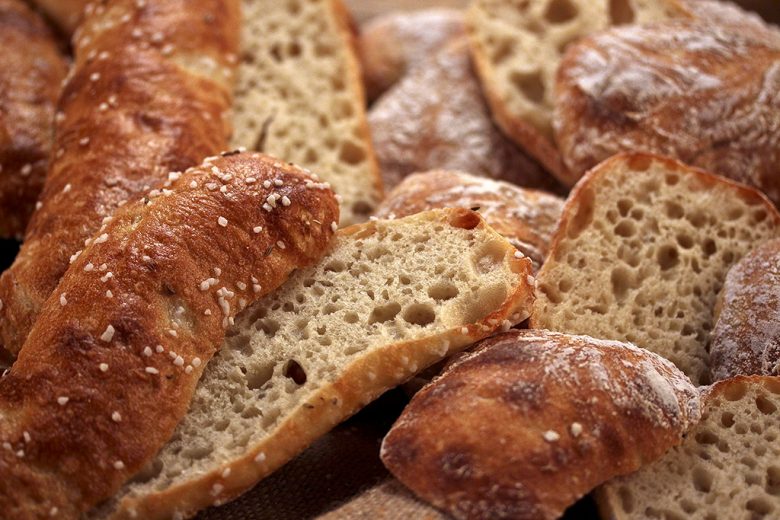Dinkelseelen und Dinkelknauzen
Because there are many traditional spelt rolls, I would like to give some of these a try. The spelt lovers in southern Germany, for example, have their Dinkelseelen or Dinkelknauzen.
These spelt rolls were always made with long dough processing or with pre-doughs. Wonderful flavors can be developed with these processes. Today we use pre-doughs to take advantage of all the benefits of spelt.
These both are rolls with a long tradition that do not differ in their composition or dough, rather only in their form.
The dough is made very soft. The hydration is TA 180 and of course also depends on the water absorption capacity of the spelled flour. Additionally there is 10% sourdough (TA 200), a scald (TA 400) and a small amount of yeast (1%).
Recipe
for a dough weight of 1862g = 10 Seelen / 80g and 15 Knauzen / 70g TA 180
Scald:
- 100g Spelt Flour Type 630
- 300g Water
Stir together water and spelt flour and bring to a boil. Then store in the refrigerator until further processing.
Spelt Sourdough:
- 100g Spelt Flour Type 630
- 100g Water
- 5g Starter
DT: 28°C RT: 16 hours
Main Dough:
- 800g Spelt Flour Type 630
- 400g Scald
- 205g mature Spelt sourdough
- 400g Water (the brave can add up to 470g)
- 30g Honey
- 22g Salt
- 10g Yeast
Mix all ingredients for 7 minutes on slow speed, and mix further on fast for 1 minutes. Then the dough gets a 3 hours rest time and can then be directly worked. It is beneficial to gently fold the dough (simply lay it over itself) after every 60 minutes.

Work up for Seelen:
From the finished dough, use a dough spatula to divide the dough (dip the spatula in water before using). Just pull the separated seelen a little elongated and place them on a piece of baking paper so that they slide off the baking peel more easily. Before baking, sprinkle with a little caraway salt and bake at 250°C with steam for 15-16 minutes. Further proofing isn’t required!
Work up for Knauzen:
From the finished dough, use a dough spatula to cut off equal-sized pieces. Reshape the dough pieces a bit and also place them on a piece of baking paper so that they slide off the baking peel more easily. Further proofing isn’t required, therefore the knauzen can also be baked immediately!
The difference from the seelen is that there is NO steam used for baking!









